Jordan is a country filled with amazing history and antiquity sites, but where to start? We’ve created a primer for the 11 historical sites in Jordan you have to visit to understand the country’s rich and diverse past through exploring its historic places. As a country, Jordan is less than 80 years old. However, this territory has been pivotal in history for thousands of years. It saw the death of Moses and the baptism of Jesus and connected Europe to Asia. Sometimes, this connection created immeasurable wealth. Other times it saw battles that shaped the history of the world for thousands of years.
Join us as we explore the historical sites in Jordan from a tourist viewpoint, focusing on Jordanian history and its people.
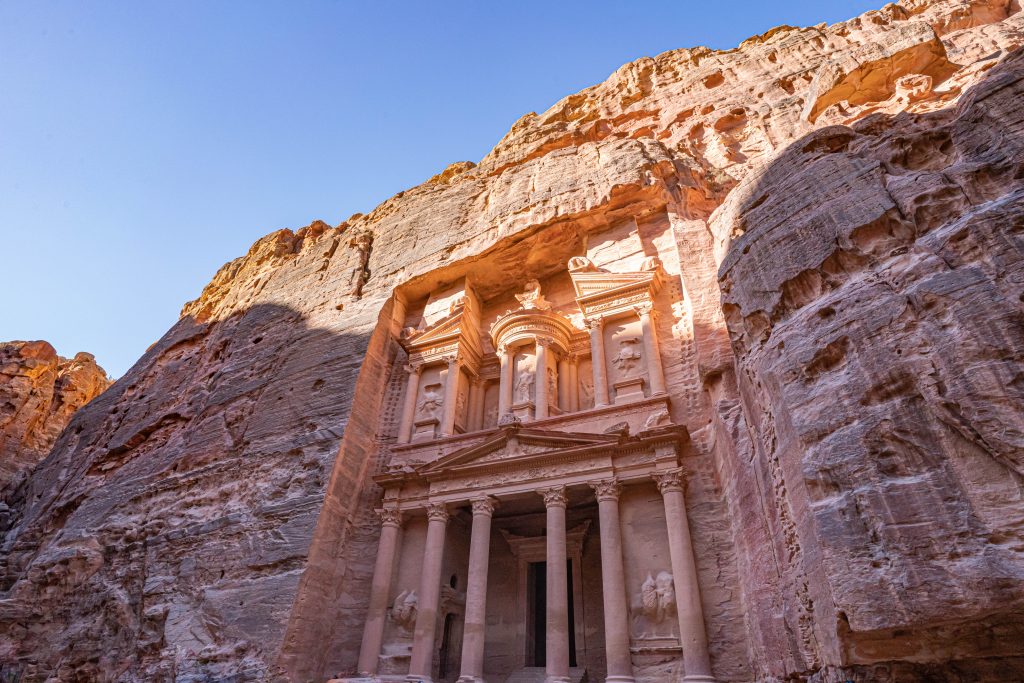
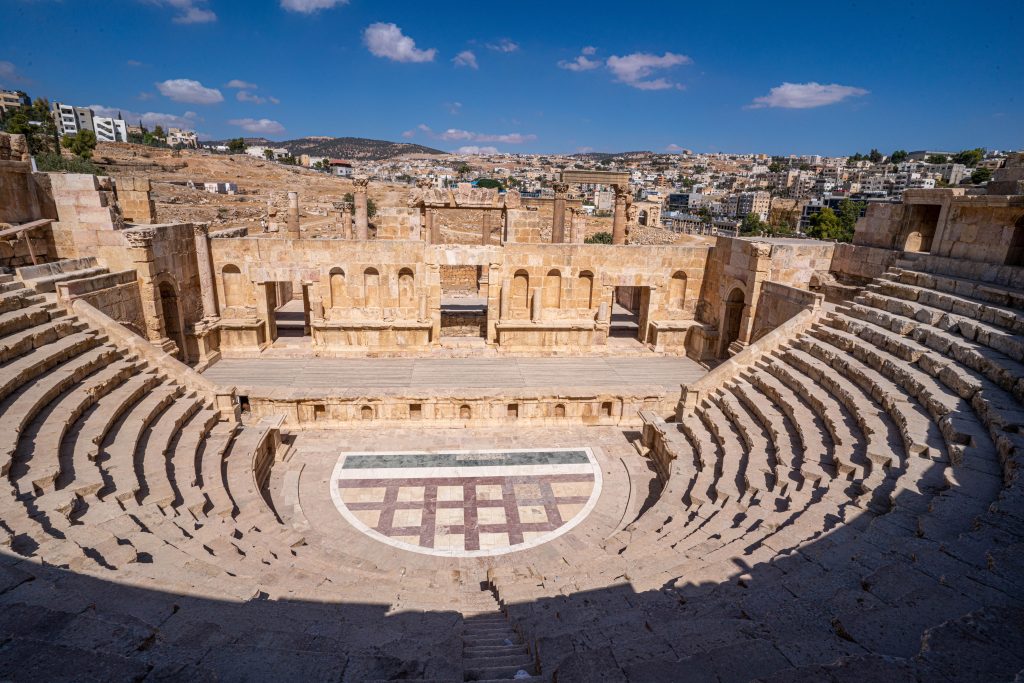
Table of Contents
Map of Jordan Historical Sites
Jordan has one of the most unusual and complex borders in the world. The western edge follows the Jordan River. Beyond that, it was created as a political construct from the Sykes-Picot agreement, where European powers divided up the Ottoman Empire after World War 1. The population density and historical sites are clustered along the western border, but it’s the country’s interaction with the desert that makes it unique.
We’re opening our article with an interactive map of Jordan historical sites. We created it with native Google pins loaded with enhanced metadata like reviews and pictures, so take a little time to click around and get a virtual lay of the land. If it doesn’t load, click the refresh button. We think it’s worth it 😉.
Petra
I’ve seen hundreds of pictures from Petra. It’s Jordan’s most visited historical site, with more than 1 million visitors every year and a reputation as one of the ‘New Seven Wonders of the World’. However, nothing prepared me for my first view of the Treasury after a mile approach through the narrow sandstone valley of the Siq. I hate cliches, but it quite literally took my breath away. I caught my first glimpse attending the Petra by Night event. It was so magnificent, lit by candlelight and colored lights under the desert sky.
There’s so much ground to cover, we created an entire post dedicated to things to do in Petra! However, since it’s already on every tourist’s shortlist, we’ll focus on the history of Petra. The Nabataeans, a tribe of nomadic Arabs, settled Petra as early as the 4th century BC. The rugged landscape made it a natural fortress, but its wealth and artistry came from controlling the overland trade routes.
It became the capital of their kingdom because of the proximity to trade routes and its natural fortifications. The Nabataeans were masters of stonework, and they carved the city out of sandstone cliffs and channeled the region’s precious water into the fertile valley floor.
With 20,000 inhabitants at its height, Petra was important enough to be an independent client state of the Roman Empire. In 106 CE, the Romans annexed Nabataea and renamed it Arabia Petraea. Petra faded quickly as the Romans shifted their focus to Mediterranean trade routes. There was some interaction with Petra from the Byzantines and Crusaders, but no mention of Petra in the narratives of the Muslim conquest of the Levant or early Islamic records.
After the fall of the Crusader’s Alwaeira Castle in the 12th century, Perta faded into memories for centuries. Nomadic Bedouin tribes inhabited the caves for centuries, but it wasn’t rediscovered by Europeans or Arabs until 1812. Archeological studies and restoration commenced, and Petra became a world heritage site in 1985.
There’s a complex history of the B’doul tribe’s interconnection with Petra. The Petra government built Umm Sayhoun as a new home for the B’doul in 1985, but the relocation agreements broke down, and much of the tribe chose to remain within Petra. The B’doul retain exclusive rights to sell goods and lead tours within Petra, and this modern story continues as one of the most fascinating chapters of cultural preservation in the modern world.
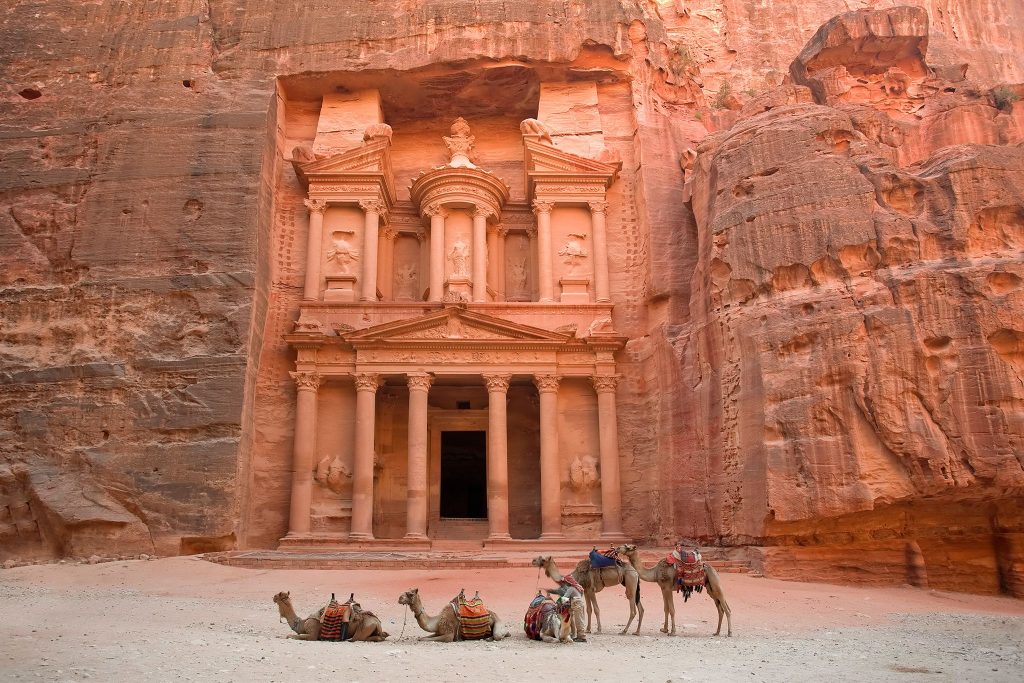
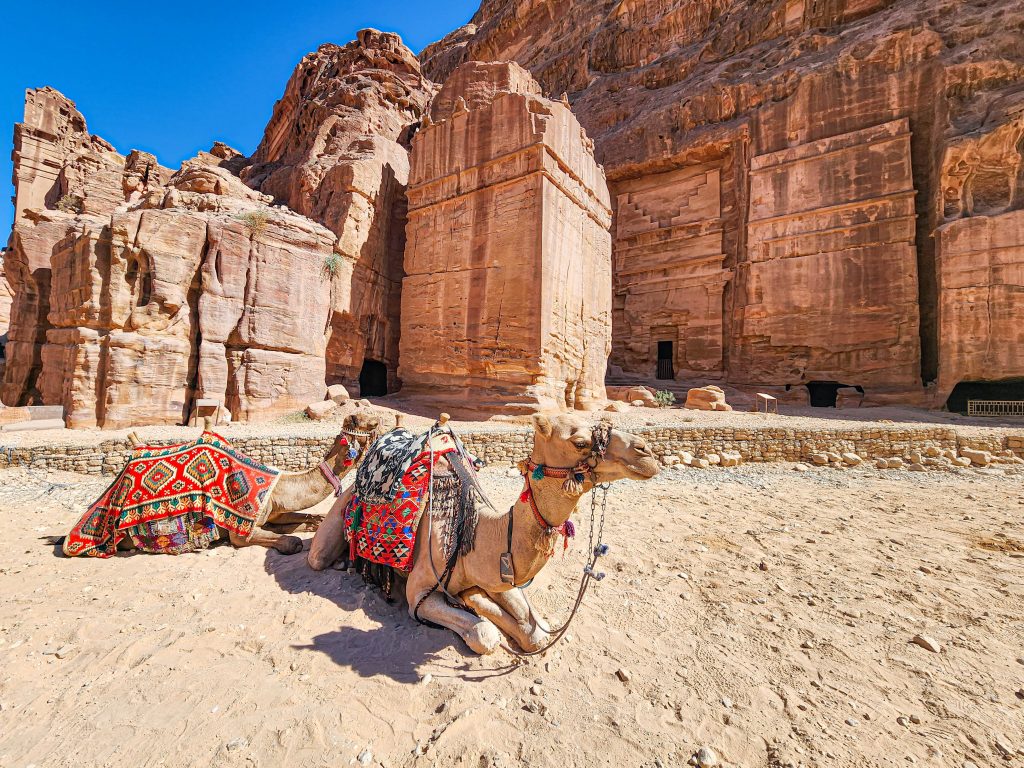
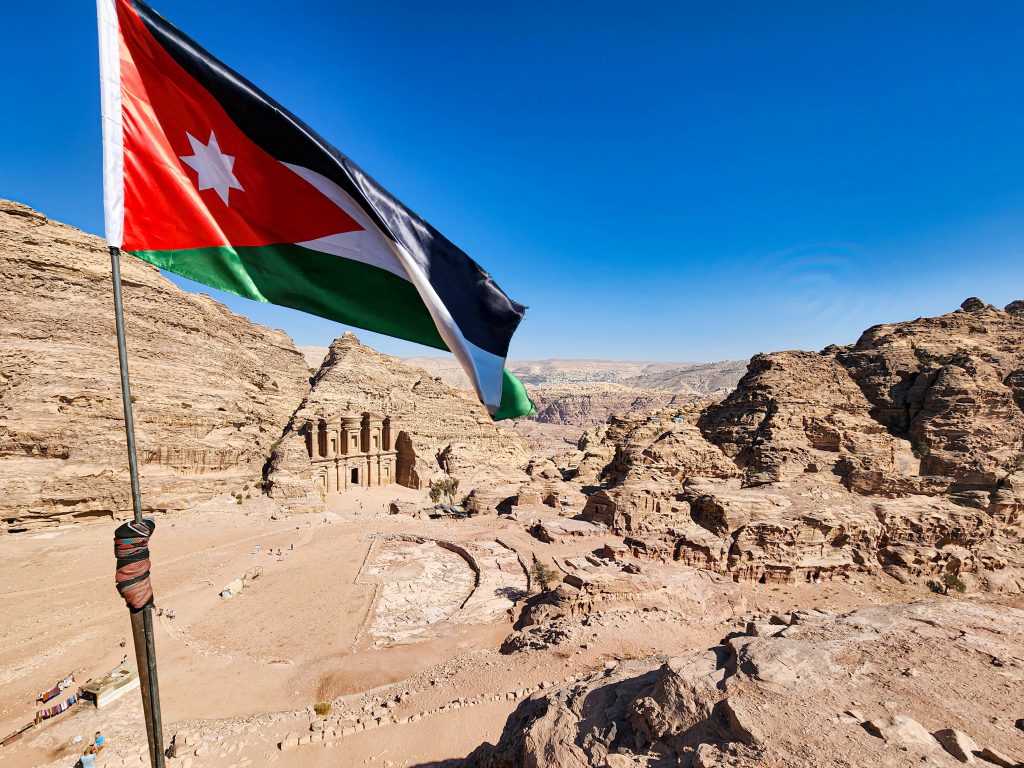
The Kings Highway & Shobak Castle – Montreal
I only saw the Shobak Castle from a distance, yet it captured my imagination. As I learned more about the castle, I realized it was the perfect backdrop to explain the crusader’s actions in Jordan and the King’s Highway.
The King’s Highway was a trade route of vital importance in the ancient Near East, connecting Africa with Mesopotamia. This trade route brought riches to Petra, and a thousand years later, Crusaders sought to replicate their success.
The Crusaders came from Western Europe, bringing their heavily armored knights and castles. The Shobak Castle (aka Montreal Castle) was built in 1115 by Baldwin I of Jerusalem to protect Christian pilgrims and the fertile Edom valley. It was impenetrable with its strategic location and a full contingent of 60 knights. In 1142, the castle passed to Raynald of Châtillon, who used it to attack caravans and tax Islamic pilgrims.
By 1187, he was building a fleet to attack the Islamic holy city of Mecca, which was the last straw for the Ayyubid sultan Saladin. Saladin laid siege to the castle for two years before Raynald capitulated. The Ayyubid’s refusal to relinquish the fort eventually derailed negotiations with the Crusaders circa 1218-19.
Raynald chose poorly when he decided to attack caravans. He died at Saladin’s hands after the Battle of Hattin in 1187, which effectively ended the Second Crusade. However, you could imagine that Templar Knights could have traveled from Shobak to Petra to hide one of their prized finds – the Holy Grail.
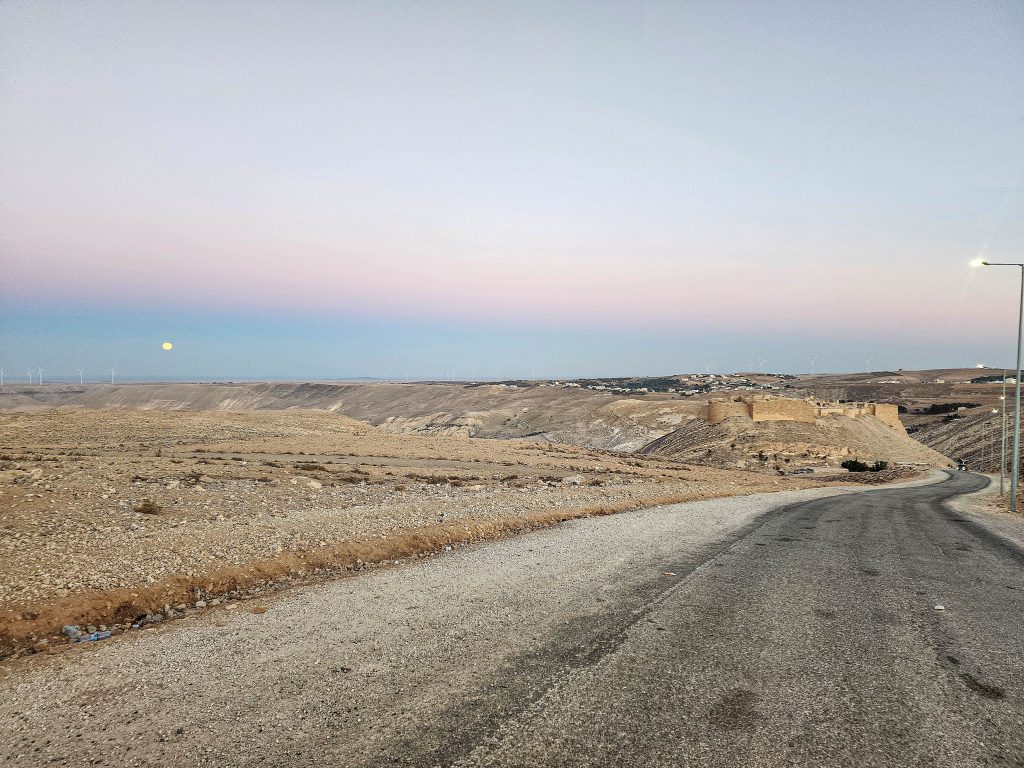
Mount Nebo
Mount Nebo is a Jordan historical site between Petra and Amman near the northern edge of the Dead Sea. We drove about 45 minutes from our hotel in central Amman through some small communities before we parked in a modest parking lot near the top of the hill. A short, stone-paved path lined with small trees led us to the summit where a sign read that this was where Moses first saw the Promised Land. The view paled in comparison to the rich history and mystery of the site.
Carrying over from the Indiana Jones franchise placing the Holy Grail in Petra, Mount Nebo is one of the possible locations of the Ark of the Covenant. According to Maccabees 2:4–8, the Prophet Jeremiah sealed the Tent of Meeting and the Ark in a cave on Mt Nebo, which “shall remain unknown until God finally gathers his people together and shows mercy to them.” God works in mysterious ways, like instructing his prophets to hide the Ark before an imminent Babylonian invasion instead of using it to defeat the invading army.
Of course, Maccabees isn’t canon for most Protestant denominations nor any major branches of Judaism. But all nuances of the Moses story from every version of the Bible and the Qur’an agree that Mount Nebo is where Moses first saw the Promised Land. Unlike the stories of wandering lost through the Wilderness of Sin (which isn’t as fun as it sounds) or crossing the Red Sea, or maybe a reed sea (Yam-Sūp̄). Scholars and scriptures all agree that Moses stood atop Mt Nebo. According to the Bible, he died before entering the Promised Land (Deuteronomy 34), but the hadith narrated by Abu Hurairah places his tomb near Jericho.
My takeaway from Mount Nebo and the Moses story is that we should spend more time looking for similarities instead of focusing on the differences. From Indiana Jones, I learned that you shouldn’t let the truth stand in the way of a good story. Either way, the panoramic view from the top of Mt Nebo enables you to see the Dead Sea, the West Bank, the Jordan River, and even Jerusalem. There’s also a 6th-century Byzantine Church and a beautiful serpentine cross sculpture created by Italian artist Giovanni Fantoni that symbolizes the miracle of the bronze serpent invoked by Moses in the wilderness (Numbers 21:4–9) and the crucifixion.

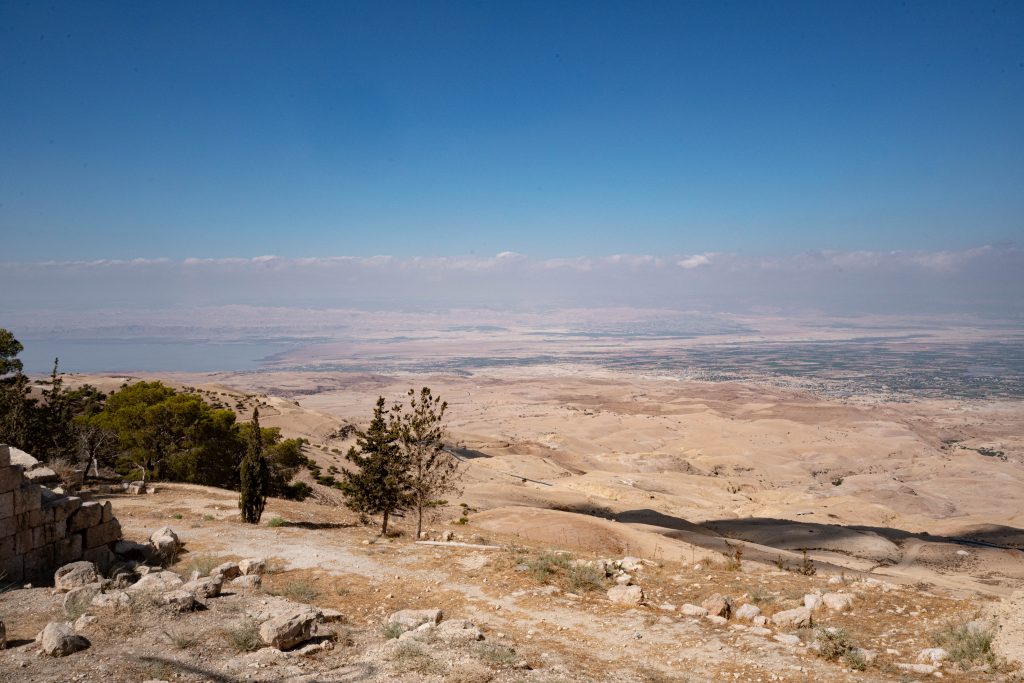
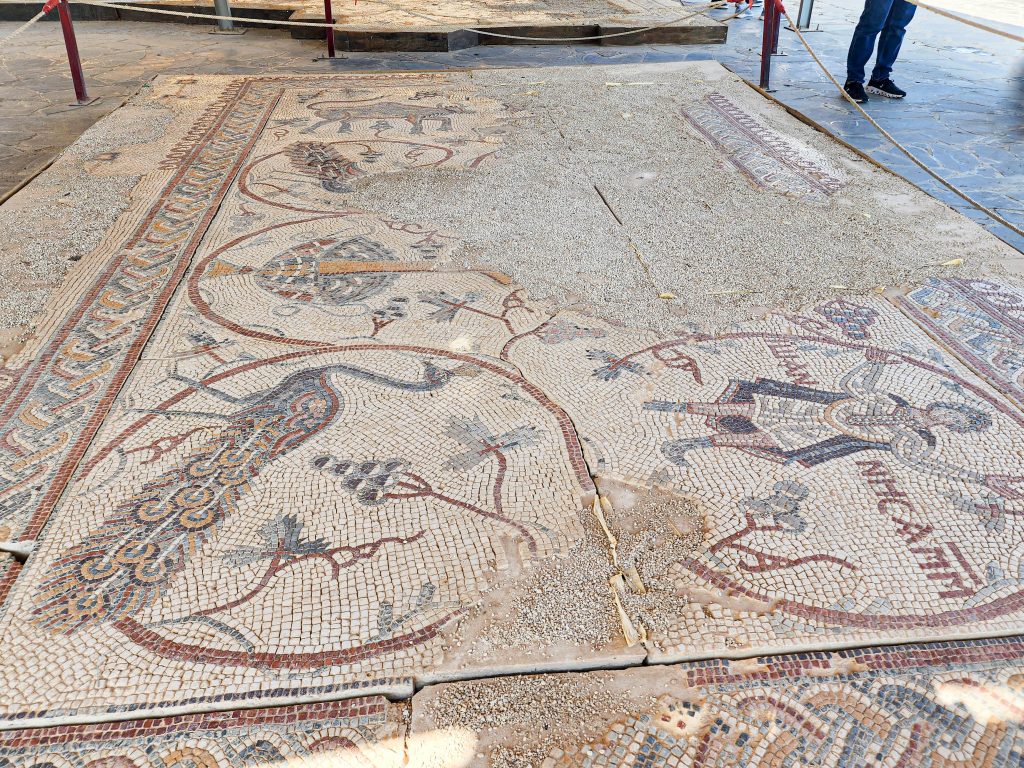
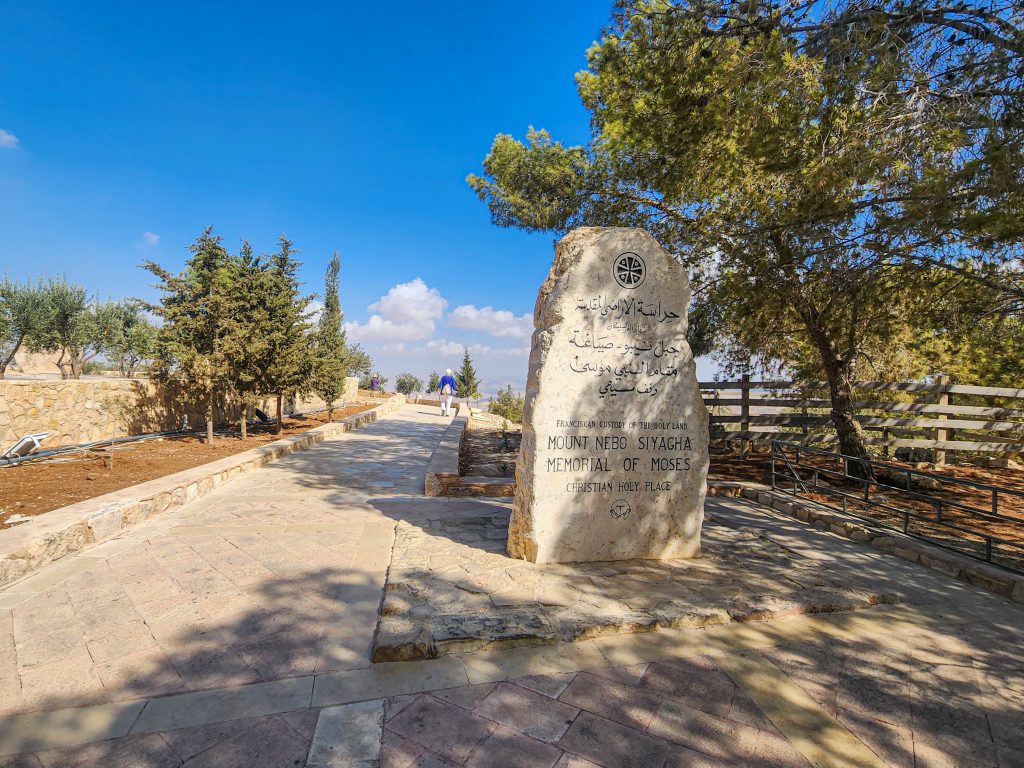
Bethany Beyond the Jordan (Al-Maghtas) – The Baptismal Site of Jesus Christ
As I gazed into the Promised Land from Mt Nebo, patterns began to emerge from the harsh desert. A blacktop road snaked down the hill into the valley, checkered by a green mosaic of irrigated farmland. Somewhere below me was Al-Magtas, where John baptized Jesus. My travel group would visit this UNESCO World Heritage Site during a spa day at the Dead Sea, but I had a sneak peek.
Al-Magtas is a relatively underdeveloped tourist site. It was on the front line of the 1967, Six-Day War and remained no-man’s-land until the 1994 Israel–Jordan peace treaty. Soon afterward, several archaeological digs rediscovered the ancient site in 1997. Jordan fully reopened al-Maghtas in 2002 following a period of excavation and restoration. The Israeli-run western side of the site, known as Qasr el-Yahud, was opened in 2011.
Several significant religious events happened in this area, including Joshua crossing the Jordan River with the Arc of the Covenant and the Prophet Elijah ascending to heaven. However, it’s Jesus’ baptism that draws the most attention. If John baptized the faithful in the River Jordan, then both sides have an equal claim. However, John likely conducted baptisms in springs at least as much as he did in the more dangerous river, which is supported by John 3:23 mention “Aenon near Salim,” where aenon stands for springs. The archeological digs uncovered several baptismal pools around Al-Magtas.
The exact details of a day 2000 years ago are hard to divine, but you’ll see both the river and the springs from visiting Al-Maghtas. Unfortunately, there isn’t an international crossing here, so it’s impossible to visit Al-Maghtas and Qasr el-Yahud simultaneously.

Madaba ‘The City of Mosaics’
Madaba sits at the base of Mt Nebo along the ancient King’s Highway route. Like many cities in the region, it has roots dating back thousands of years and multiple mentions in the Bible. After visiting Mt Nebo, we explored Madaba, known as ‘The City of Mosaics.’
Madaba might have faded into antiquity if not for a conscientious group of settlers or resettlers who occupied the old city ruins circa 1880. As they used the ancient stones to build houses, they uncovered a remarkable array of murals and immediately recognized their historical importance.
Perhaps the most significant find was the Madaba Map, discovered in 1884 during the construction of a new Greek Orthodox church on the site of its ancient predecessor. It is the oldest surviving original cartographic depiction of the Holy Land, containing over two million colored stones. The map was most likely made between 542 and 570 CE based on the buildings in the detailed representation of ancient Jerusalem. The Sasanian Empire conquered Madaba in 614, and the ruling Muslim Umayyad Caliphate removed some figural motifs in the eighth century. An earthquake destroyed Madaba in 746, leaving the city abandoned.
You’ll find hundreds of other mosaics from the 5th through the 7th centuries throughout Madaba, including Hippolytus Hall in the Archaeological Park. From the Magic The Gathering Card, Fade in Antiquity – “Memories fade and wither with time. If we do not nurture the garden of history, we may once more wander blindly through barren lands.” Luckily, Madaba chose to nurture its garden of history and continues to do so today, including ongoing archeological research and founding the Institute of Mosaic Art and Restoration.
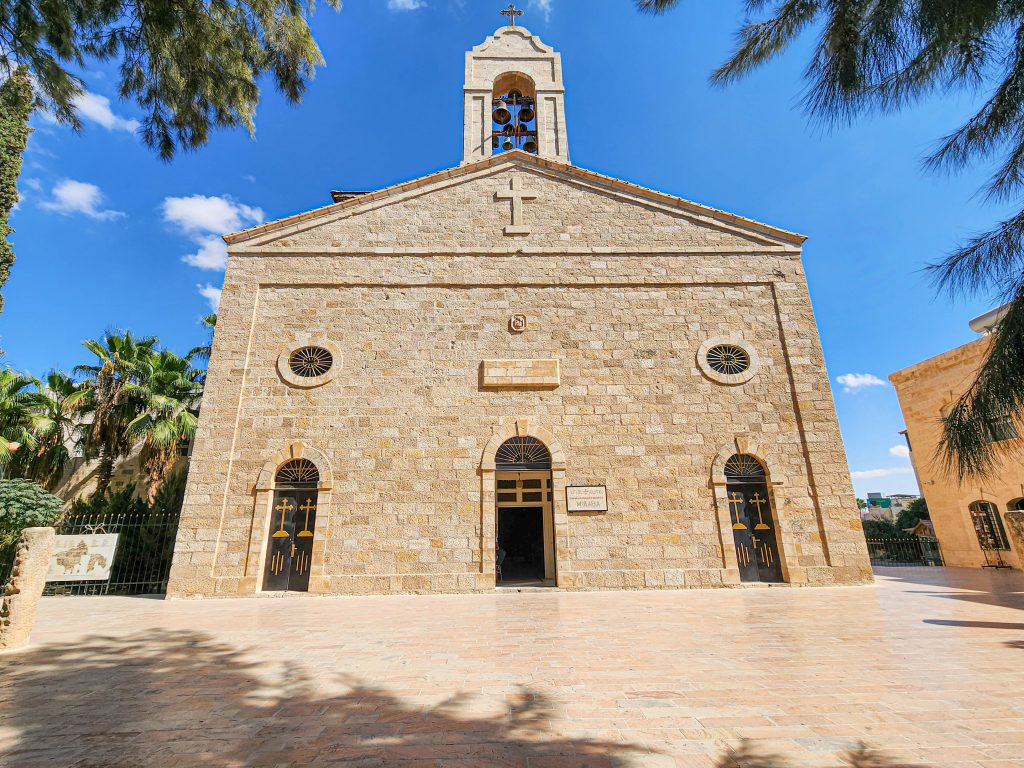
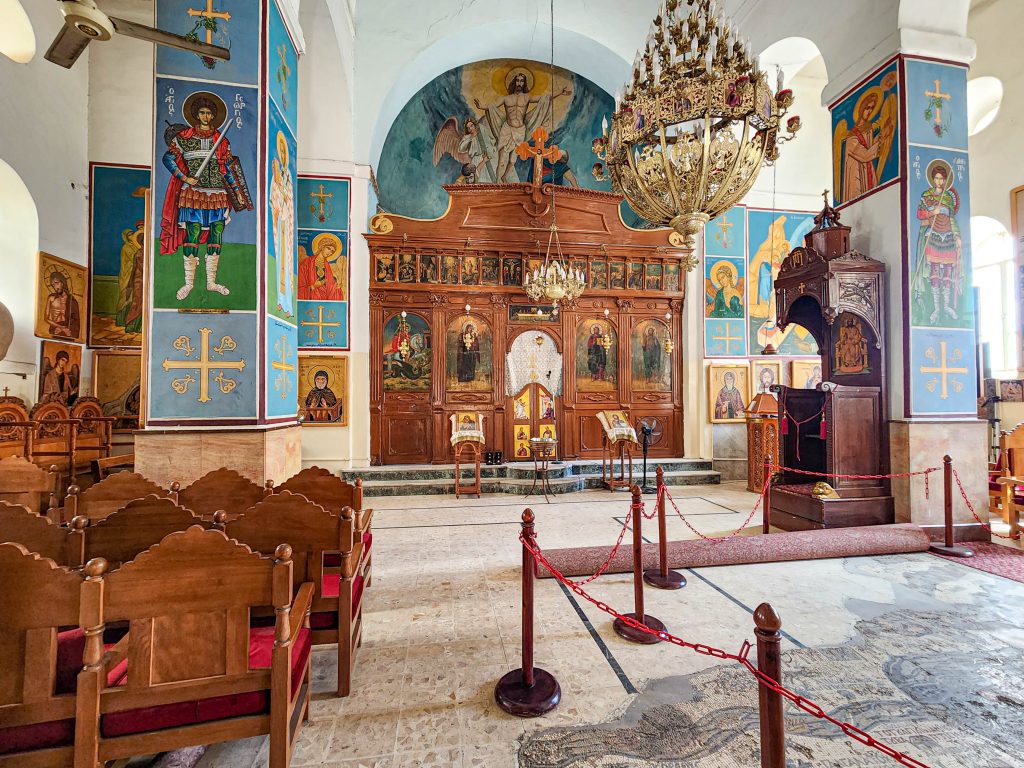
Amman Citadel
Amman airport is the international gateway to Jordan, with a capacity for more than 12 million passengers annually. Paraphrasing William Faulkner, to understand Jordan, you must first understand a place like Amman. It’s one of the rare national capitals not located on a river or port. The Eastern Mediterranean coast is similar to the Southern California coast. It’s dry, but the coastal climate has high temperatures of 65 in the winter and 85 in the summer, just a little warmer than San Diego but very pleasant. Mountains rise above the coastal plains, and beyond them is hard desert. In southern California, it’s the Colorado Desert, and in the Middle East, it’s the Syrian Desert. Amman is in the highlands above the coastal plain and rivers but above the harsh desert heat, kind of like Julian, California.
Jordon doesn’t have massive fertile river plains like Egypt or Mesopotamia or the Mediterranean trade routes like Greece, Rome, or Istanbul. Historically, Amman controlled overland trade routes and farmed in the highlands when times were good. When trade collapsed, the city often reverted to tribes of semi-nomadic herders. Amman’s survival depended on maintaining complex relationships with some of the most powerful empires in history. Perhaps this is why some people call Jordan the “Switzerland of the Middle East”.
The Amman Citadel is an archeological site at the center of downtown Amman on one of the seven hills that initially made up the city. The Citadel has a long history of occupation by many great civilizations:
- 1200 BCE – Capital of the Kingdom of Ammon
- 8th century BCE – Neo-Assyrian Empire
- 6th century BCE – Neo-Babylonian Empire
- 3rd century BCE – Ptolemies
- 1st century BCE – Romans
- 3rd century CE – Byzantines
- 7th century CE – Umayyads
- 1516-1918 CE – Ottomans
These civilizations left their mark on the Citadel, including the Roman Temple of Hercules, the Umayyad Palace, the Byzantine church, and the Ayyubid watchtower.
I was astounded to find a full-blown historical site surrounded by a world capital. More than anything, I recognized the Greco-Roman architecture immediately, and, judging from the hands, I could only imagine how big the Hercules statue must have been. Of course, I’ve made that mistake before in my youth, so I’ll reserve my judgment😉.
What I loved most about the Amman Citadel were the nearby museums. The Jordan Archaeological Museum was established in 1951, right in the middle of the Citadel. It contains artifacts chronologically arranged from prehistoric times to the 15th century. It was evident that the museum was too small, so the Jordan Museum was built in 2014. It’s only a 20-minute walk from the Citadel. Inside its 10,000 square meters interior, you’ll find ʿAin Ghazal statues, some of the world’s oldest human figures ever made, and the Copper Scroll, one of the Dead Sea Scrolls.
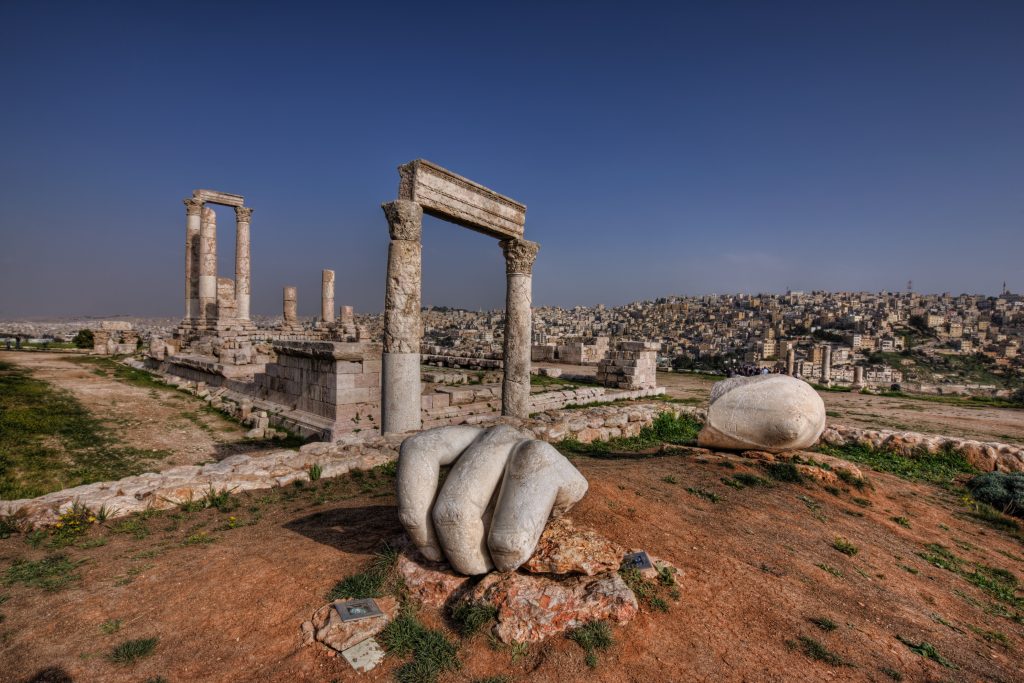
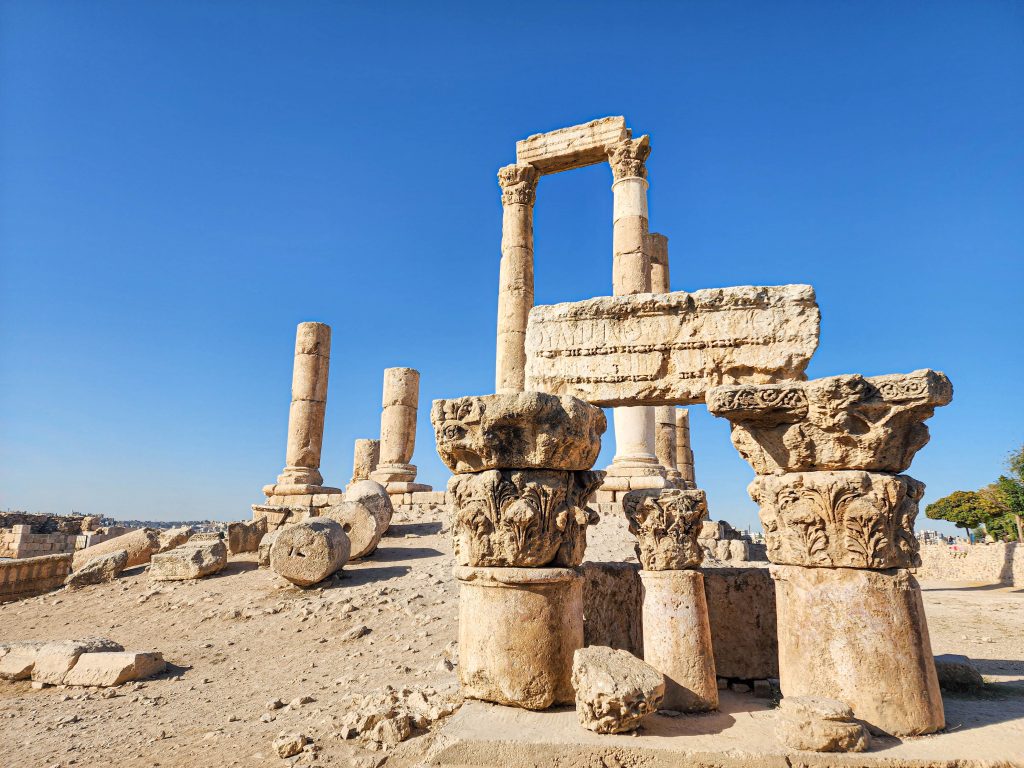
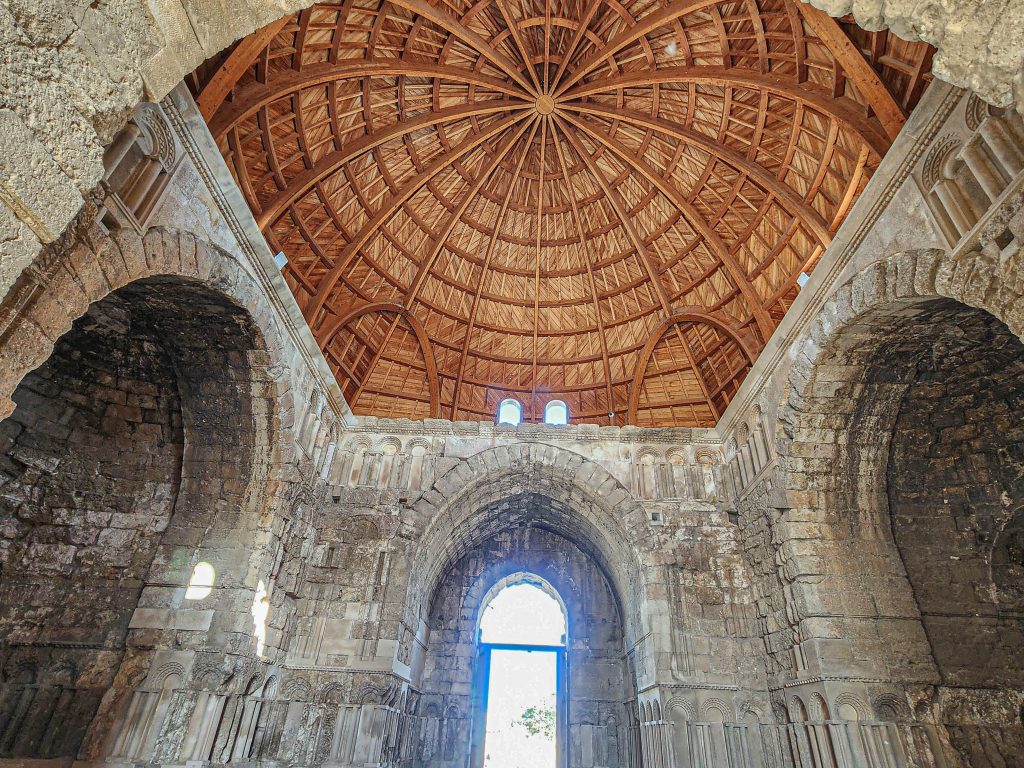
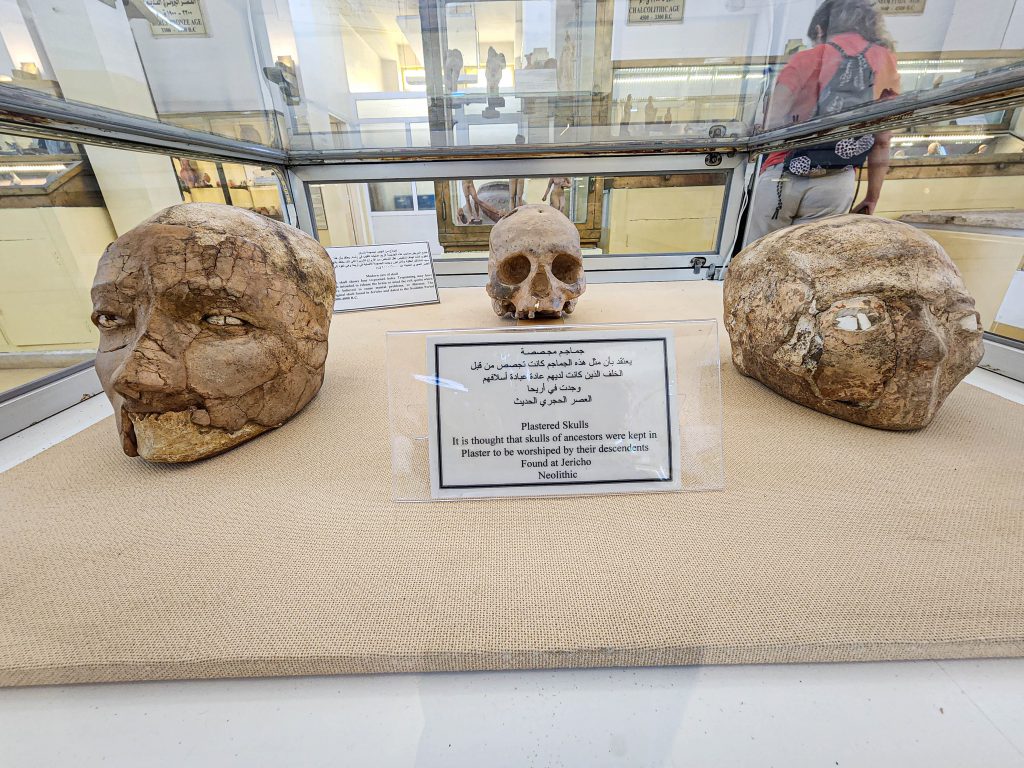
Greco-Roman City of Jerash
I was awestruck standing in the middle of Jerash’s oval forum and Cardo Maximus, the major north-south road in Roman urban design. Fifty-Six Corinthian columns encircled the forum, and even more stretched down the colonnade along the Cardo Maximus. No wonder Jerash is known as “The City of 1000 Columns.” The amphitheater was equally impressive, with seats for more than 3,000 spectators.
Jerash is one of the largest and best preserved Greco-Roman cities outside of Italy, which earned it the nickname of “Pompeii of the Middle East.” Over 330,000 visitors arrived in Jerash in 2018, making it one of Jordan’s most visited historical sites.
Even if you’ve been to Italy, you still want to visit Jerash to learn about the Decapolis League, ten Hellenistic cities on the eastern frontier of the Roman Empire. Classical Greece was part of the foundation of Western civilization and one of the first European empires. By 323 BCE, Alexander the Great had expanded his empire throughout Asia Minor. Even today, the capital of Afghanistan is Kandahar, and the country still utilizes the ancient Greek aqueducts.
After Alexander’s death, his kingdom was divided among his generals. Jordan was ruled successively by the Pergamon and then Seleucid Empires, both rump states of ancient Greece. Unlike Rome, Greece was organized along semi-autonomous city-states that could form external alliances and even wage war against each other. Greece sided with Carthage during the Punic Wars, which resulted in Roman victory and command of the central Mediterranean in 146 BCE. From there, Rome expanded, assimilating Hellenistic culture as they went. Ultimately, Rome conquered the region in 63 BCE and formed the Decapolis League. In much the same way as the Byzantines continued Roman culture after the fall of Rome, the Seleucids continued Greek culture for almost a century after the fall of Greece.

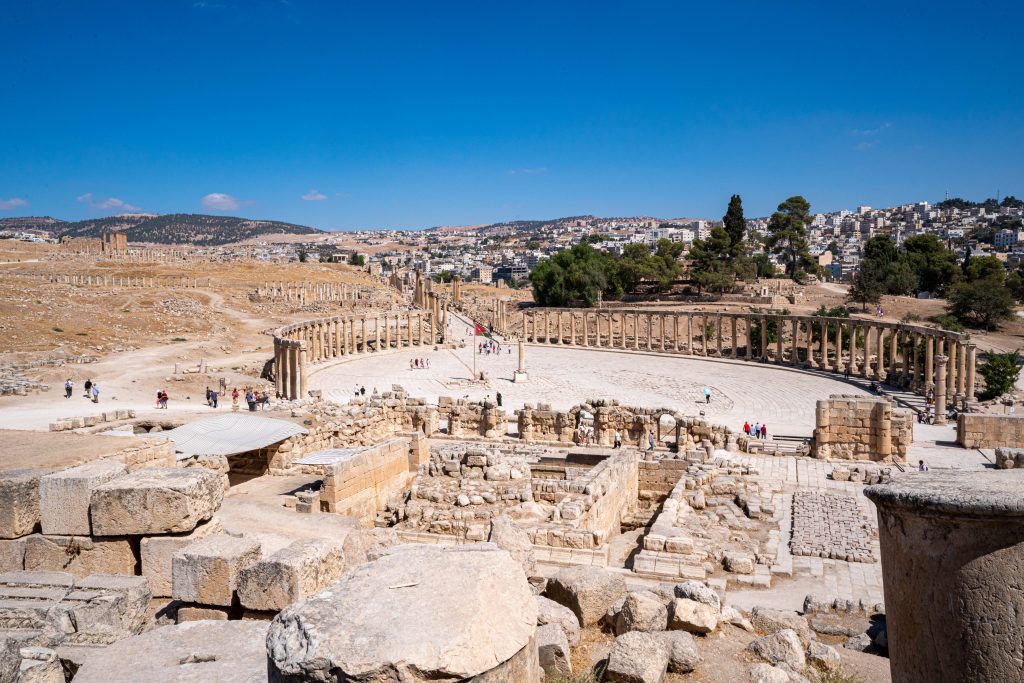
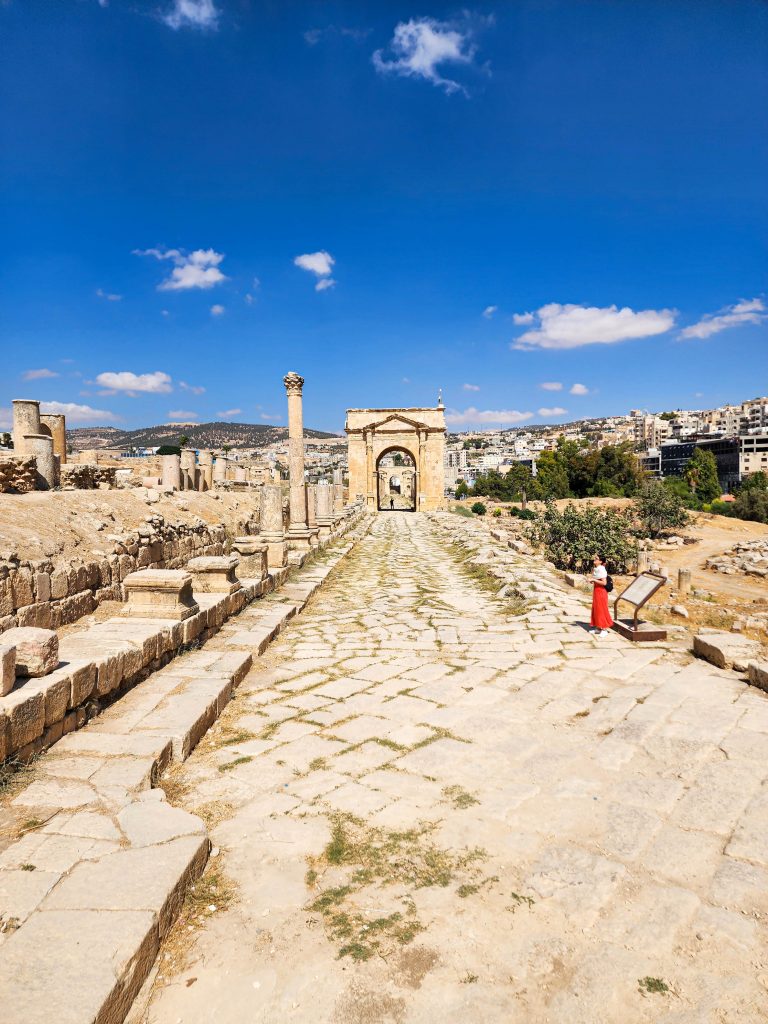
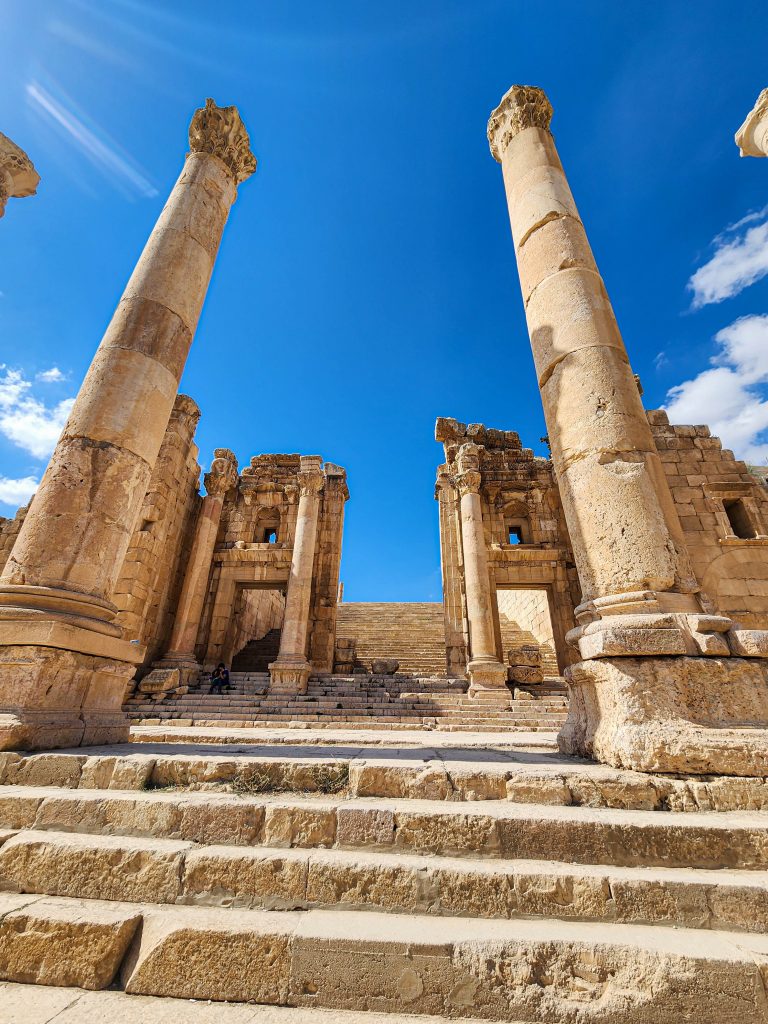
Gadara – Umm Qais
Gadara, modern Umm Qais, is a Decapolis City in the North-West corner of Jordan known more for its strategic location than for continuity of government. The Greek name for the city is Gadara, which comes from a local Semitic word meaning “a fortified city”. It’s also the starting point for the Jordan Trail, a 40-day, 400-mile distance hiking trail that takes you through 75 villages and 10,000 years of history.
Looking down into the valley, I saw the Sea of Galilee, the Yarmouk River gorge, and the Golan Height. I knew of Jesus’ exploits here, like walking on water and the Sermon on the Mount. Undoubtedly, his ministries benefited by being distanced from political power centers. I also remember the Golan Heights as a contested strategic territory during the Six-Day War. However, one of the most pivotal battles in world history occurred in the Yarmouk River Valley.
The Battle of the Yarmouk in 636 CE was a complete Muslim victory that ended regional Byzantine rule. The Byzantines outnumbered the Muslims two to one, but the Muslim general Khalid ibn al-Walid was a master tactician. In particular, he utilized his cavalry to create a strategic advantage at the point of attack that shifted continually throughout the battle. The battle ushered in the Umayyad Dynasty in Syria and saw continued regional prosperity. Umayyads spread across Arabia, North Africa, and Spain.
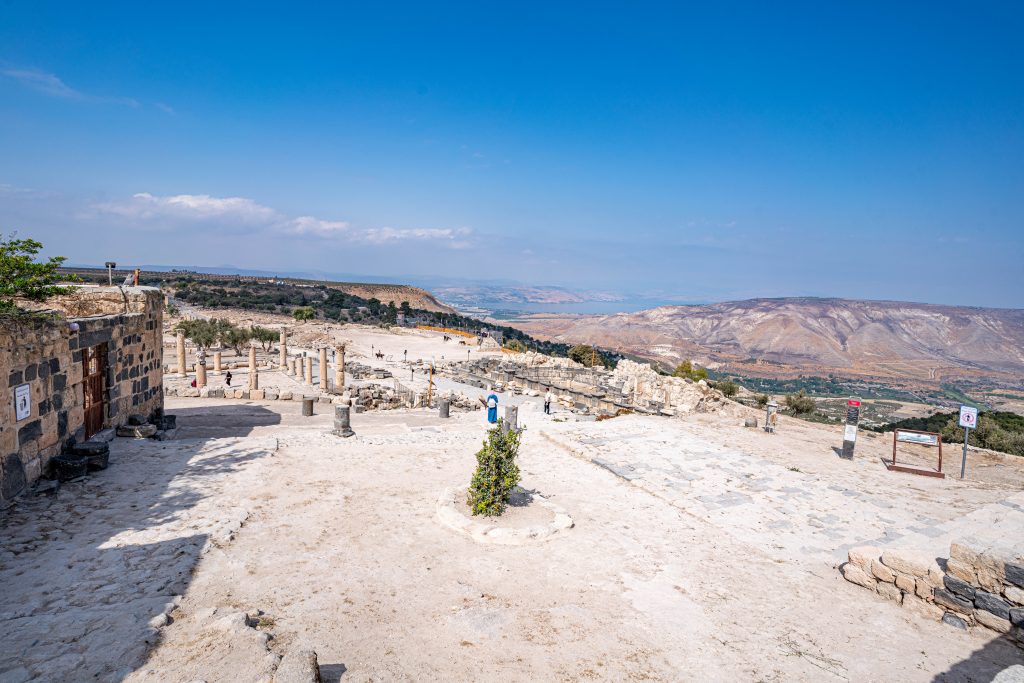

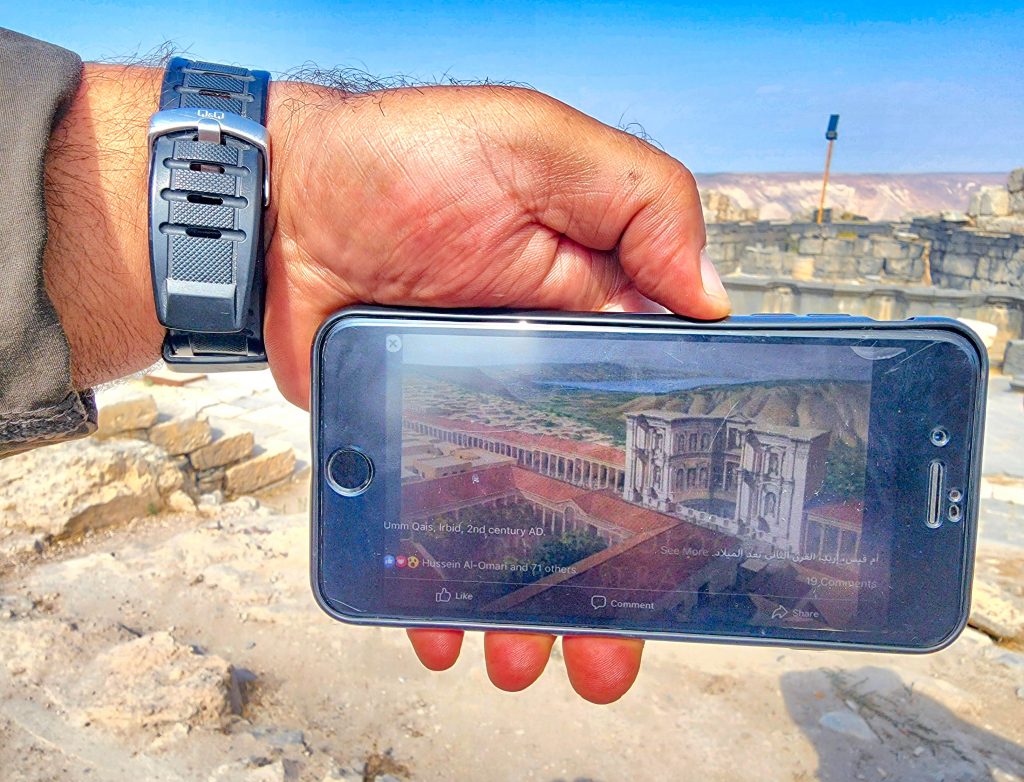
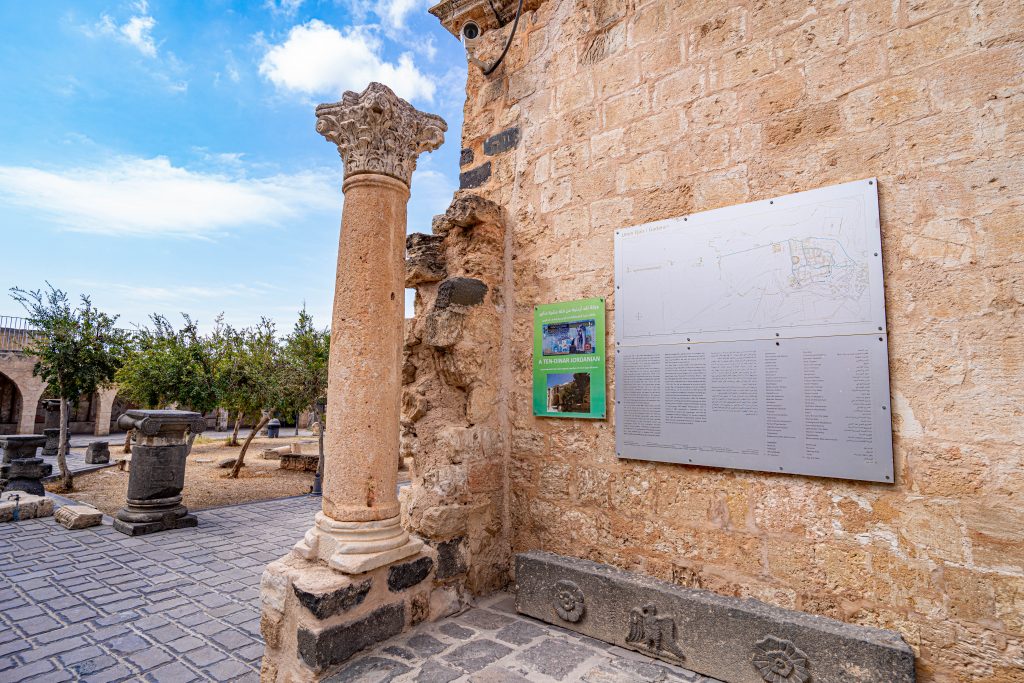
Quseir ‘Amra and Umm ar-Rasas
Quseir ‘Amra and Umm ar-Rasas are both UNESCO World Heritage Sites about an hour’s drive outside Amman. Romans utilized Umm ar-Rasas as a strong point along the King’s Highway. The Byzantines converted it into a religious center, building at least 16 churches. Visitors can see one of the largest and best-preserved mosaics in Jordan on the floor of the Church of Saint Stephen. They can also see one of the few remaining stylite towers where Christian ascetics lived in isolation, preaching, fasting, and praying to ensure the salvation of their souls.
Quseir ‘Amra is an exceptionally well-preserved desert castle that was both a fortress and a residence of the Umayyad caliphs. The most significant elements of the property are the bath building and reception hall, which have richly decorated murals that reflect the secular art of the time. The site demonstrates the administrative strategy of the first Islamic caliphate and its interactions with the tribes of the Wadi Butum region.
After the Abbasid Revolution of 750 CE, much of Jordan, the Abbasids had little interest in the tribal affairs of Jordan. Caliph Al-Mansur founded the city of Baghdad in 762, which became the center of science, culture, and invention during the Golden Age of Islam.
This time frame also corresponds to the start of the Medieval Warm Period. Maybe it was crop failure that caused the cities of Jordan to be abandoned, or maybe it was a political shift. Perhaps they are two sides of the same coin. Either way, after 750, Quseir ‘Amra shared the same fate as many of the historical sites of Jordan. It faded into antiquity, only to be visited by the occasional nomadic tribesman.

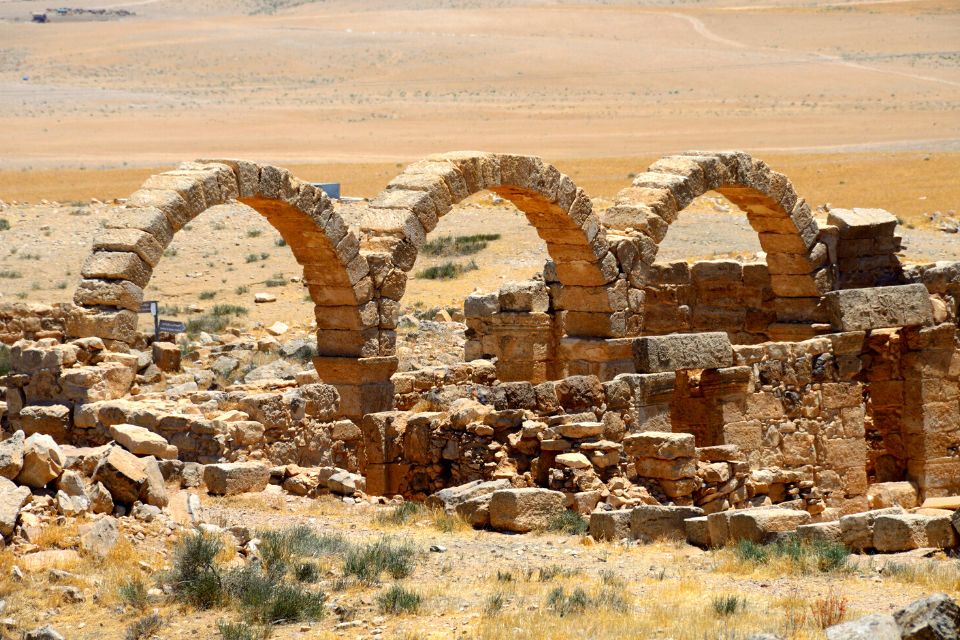
Wadi Rum
Wadi Rum is the largest wadi (Arabic for valley) in Jordan. It’s an adventurous wonderland, but that’s not what makes a UNESCO World Heritage Site. Widespread petroglyphs, inscriptions, and archaeological remains testify to 12,000 years of human occupation. There are more than 25,000 petroglyphs, 20,000 inscriptions, and 150 archaeological sites in Wadi Rum. It’s known as the Valley of the Moon, but ironically, it was the filming location for The Martian.
Wadi Rum was also critical in modern Jordan’s history with T. E. Lawrence, aka Lawrence of Arabia. Lawrence was instrumental in the 1916 Arab Revolt against the Ottoman Empire. Lawrence led many active military campaigns around Wadi Rum, with a statue dedicated to him within the wadi.
He helped the Arabs liberate Damascus when he learned of the specific language Sykes-Picot agreement. Particularly that Arab sovereignty was predicated on them liberating the territory themselves. However, despite their success in Syria, the Emirate of Transjordan, a British protectorate, was created that effectively cut off Syria from the Arabs. The Emirate’s boundary became, more or less, the boundary of modern Jordan and an ongoing sore point between Arab and European relations.
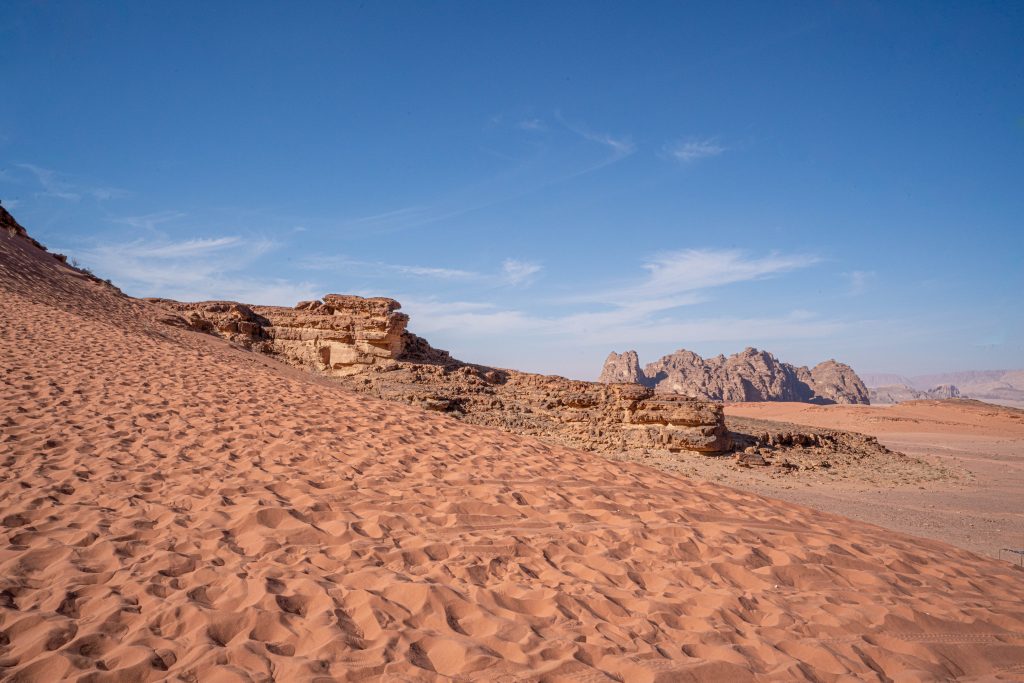

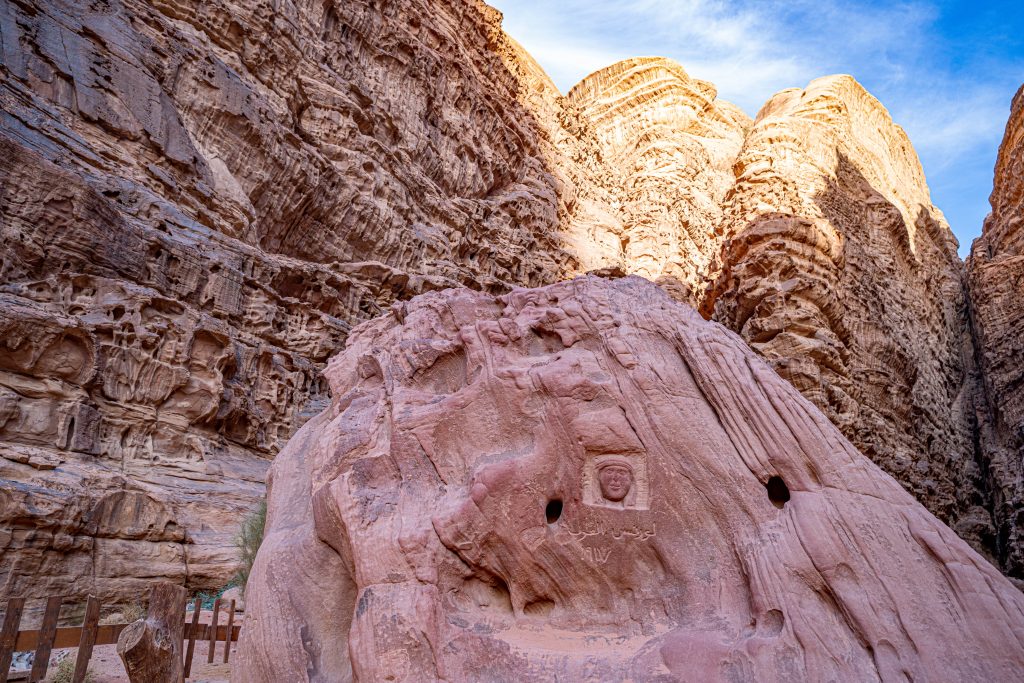

Wrapping up Jordan Antiquity Sites
Jordan has a long and rich history associated with almost every major Mediterranean and Asia Minor civilization that left behind art, culture, and architecture. Fortunes shifted like desert sand, swinging the influence from west to east.
The rich and diverse Jordan story offers a unique opportunity to discover thousands of years and thousands of miles of human history in a relatively small area. And, if you think the history is cool, wait until you learn more about the adventures in Jordan.
Disclosure: A big thank you to the Jordan Tourism Board for hosting us, setting up a fantastic itinerary, and usage of some of the images throughout (image credit in hover text 😉).
For more travel inspiration check out Jordan Tourism’s Instagram, Facebook, Twitter, and YouTube accounts.
As always, the views and opinions expressed are entirely our own, and we only recommend brands and destinations that we 100% stand behind.
Like it? Pin it for later on Pinterest!

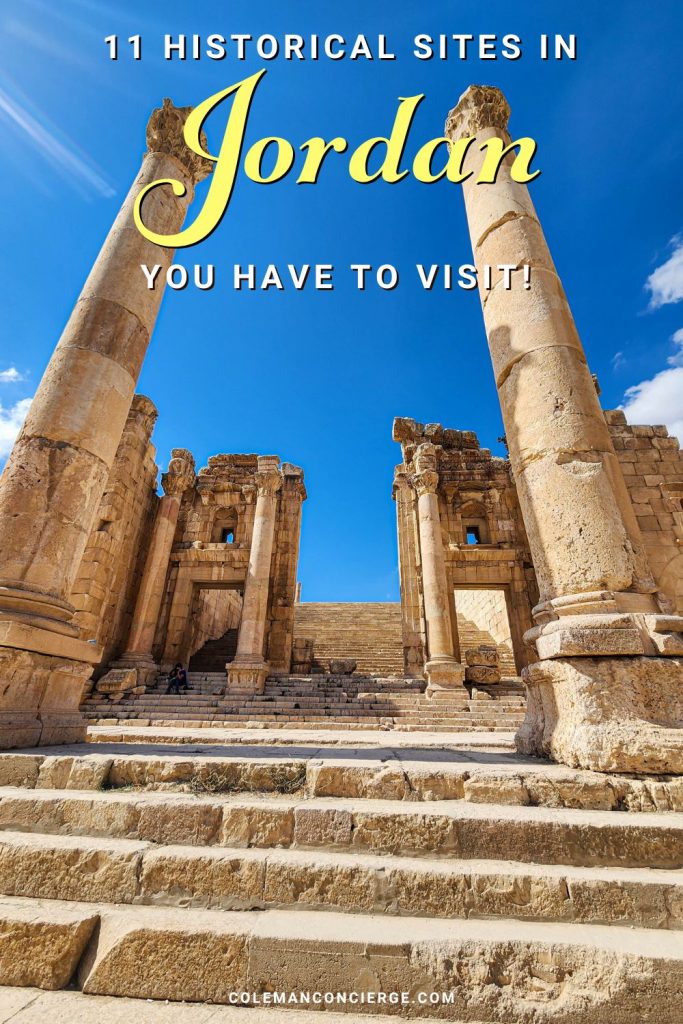

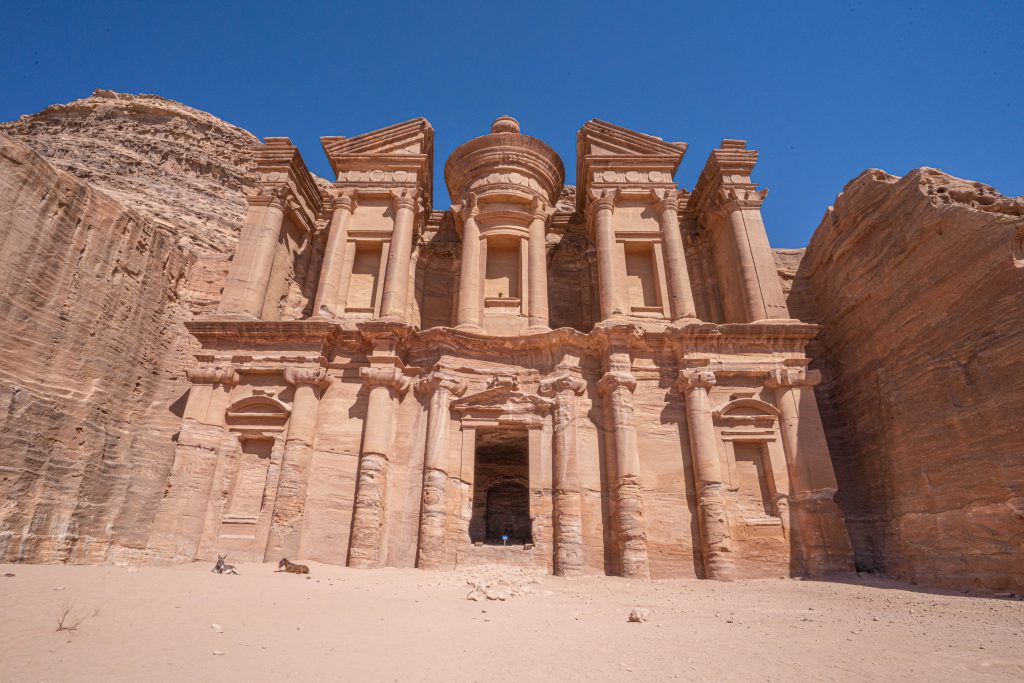
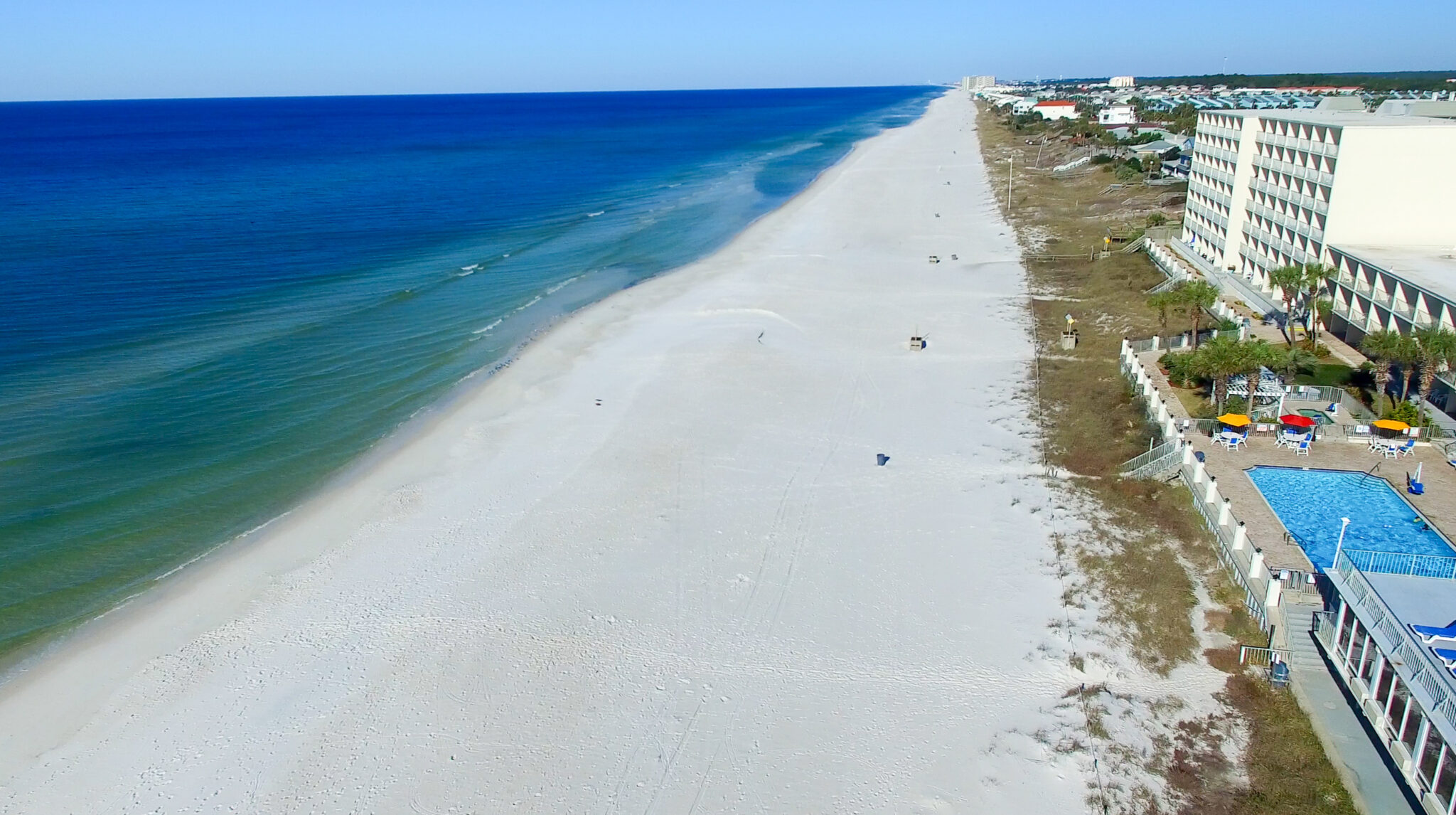
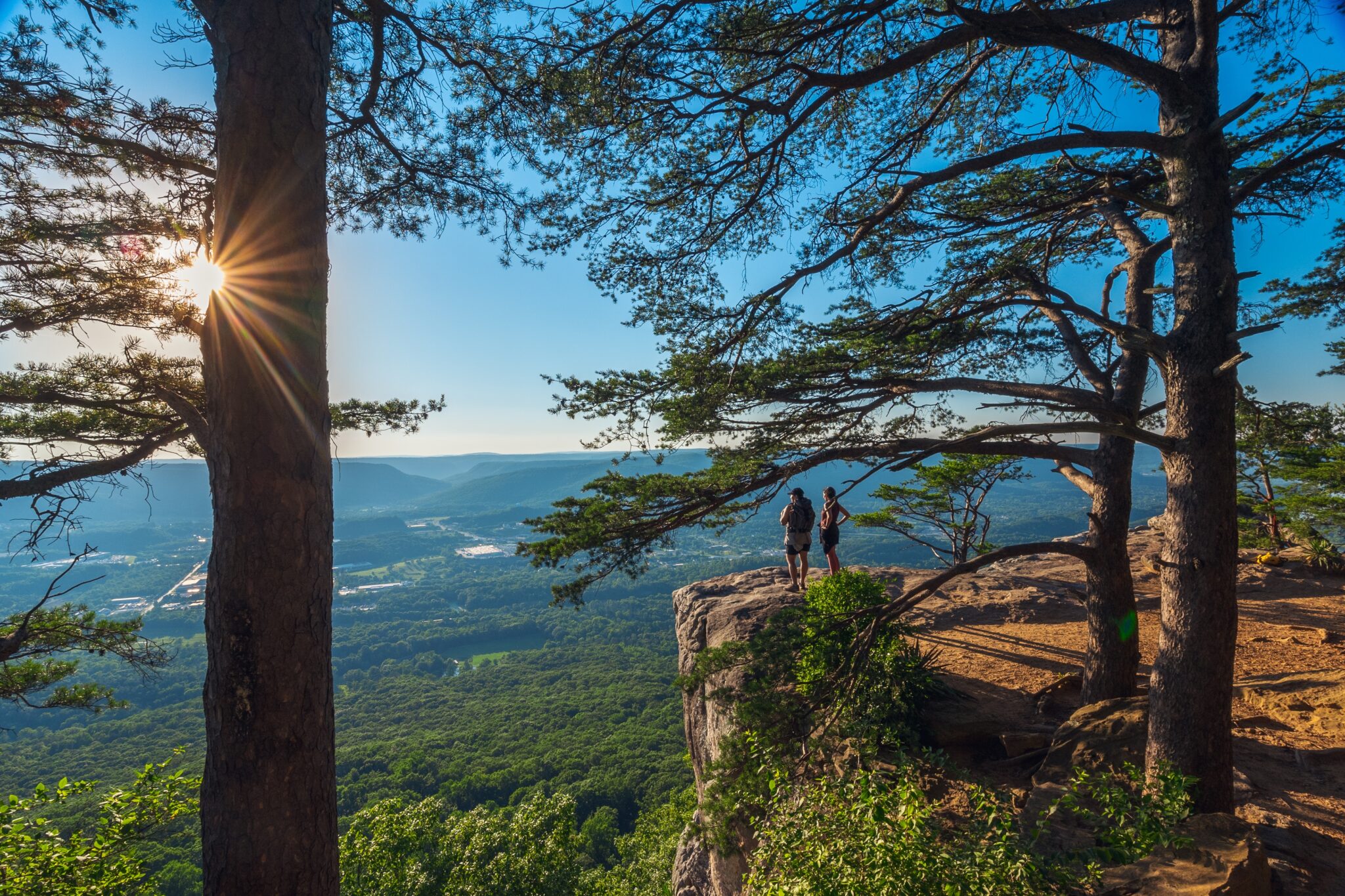
 Hi! We are Jenn and Ed Coleman, and together we are Coleman Concierge. It is our goal to inspire you to get out, expand your world, and to seek adventure, even in your own backyard.
Hi! We are Jenn and Ed Coleman, and together we are Coleman Concierge. It is our goal to inspire you to get out, expand your world, and to seek adventure, even in your own backyard.












